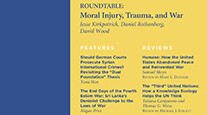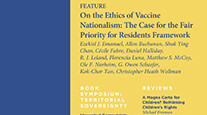This new work by Ann Towns is an intelligent and timely addition not only to the field of International Relations but also to interdisciplinary scholarship that is interested in the relationships between the status of women, state behavior, and approaches to global governance. Women and States has two primary objectives. On a theoretical level, it claims that international norms, in addition to creating policy convergence, generate social hierarchies and rankings among states. The study uses empirical data to show that state approaches to global governance and the making of social distinctions explicitly incorporate the political status of women to achieve different national interests. These forms of social and cultural distinction, as the book goes on to demonstrate, affect the making of international order. Firmly situated within and contributing to constructivist studies of international relations, Towns's work relies on extensive and multilingual primary and secondary archival research to substantiate these core claims.
Towns addresses her main points by first reconstructing theoretical approaches used to study norms and global society. She argues that constructivist studies neglect the ''stratifying'' aspects of society where ''states are socially ranked and ordered'' (p. 41). This claim is supported by her theoretical and historical linking of women's political status with cultural demarcations of superiority and inferiority in the international system (chapters 3 and 4).
While studies in international relations typically highlight the standardizing effect of norms, as observed in the worldwide spread of state practices and institutions, Towns argues that norms not only homogenize but also distinguish state behavior. These norms often remain embedded in symbolic and/or military violence in the form of transnational exchanges and competitions. Furthermore, by grounding her investigation in international cases of the proliferation of state institutions on women, such as women's suffrage, the emergence of national agencies for women's issues, and the adoption of legislature sex quotas (chapters 5, 6, and 7), Towns convincingly argues that the domestic political status of women is a crucial element in the ways that a state becomes socially ranked within the international system. The author then goes on to suggest that a state's social ranking in turn shapes the decisions made by its elites in both local and international arenas. For example, contrary to what may be expected, progressive policies such as legislature sex quotas were adopted first in developing countries (which can be interpreted as an attempt to rise in rank) rather than in more ''advanced'' Western market democracies.
While similar arguments about the political status of women as central to transnational relations in the global system have been made by other feminist scholars, the significant contribution of Women and States is that it persuasively links the overall functioning of states and global governance regimes to the political status of women. Furthermore, rarely have studies offered such precise theoretical and empirical explorations that at the same time enable readers to re imagine the association between women's political rights and problematic transnational exchanges. Oftentimes, investigations merely conclude with counterexamples of subject-making through ''agency.'' By bringing attention to the political stakes that surround norm-making and social rankings in the international system, Towns also encourages her readers to consider seriously the local struggles of women's rights movements in ''low ranking states,'' showing that such states can be important sources of new practices on gender equality.
Methodologically, incorporating an intersectional approach, and a less abstract lens, might have been theoretically revealing. Given that the text is making a global claim, it would have benefited from engagement with long-standing debates found within postcolonial and lesbian and gay scholarship that highlight the intersections of class, gender, sexuality, and ethnicity in diverse contexts of political struggles. Neither women nor states are disassociated from these characteristics during local and international contestations that surround social ranking processes. These differences affect how women as well as institutions are encountered locally and internationally. In turn, this matrix also carries ramifications for the approaches that both people and institutions employ to position themselves in negotiations.
Furthermore, the discussion of the state's ''feminine'' and ''masculine'' character in the concluding chapter appears both out of place and hastily constructed. Towns successfully identifies norms as social hierarchies through a discussion of women's political status on a global scale. An attempt to address the state's gendered character, however, falls out of the book's stated scope: ''There are also reasons to argue that adding women has disrupted some of the prior masculinist foundations of the state by inserting presumably female traits'' (p. 200). Through this claim, the problematic dichotomy between ''masculine'' and ''feminine'' is reinstated. Moreover, this argument, which stands in opposition to most feminist studies that emphasize the multiplicity of and fluidity between the two constructs, hardly relates to the book's previous seven chapters, which focus primarily on women and not on gender or sexuality. This short section also risks the danger of conflating females with the ''feminine'' and males with the ''masculine.''
Nonetheless, Towns has made a noteworthy contribution to interdisciplinary studies of international relations and enhanced our understanding of the interplay between women's status, state behavior, and international relations. The study's innovative theorization of international norms as social hierarchies distinguishes Women and States as a work that can bridge conceptual gaps between academics and practitioners. Researchers and teachers in the social sciences will appreciate the book's introduction of women's political identities as a site for making international norms and an underlying theme of global governance, as well as its convincing demonstration of the contentious interaction between norms and transnational relations.
—Shirin Saeidi
Shirin Saeidi is a doctoral candidate in the Department of Politics and International Studies at Cambridge University, UK.



